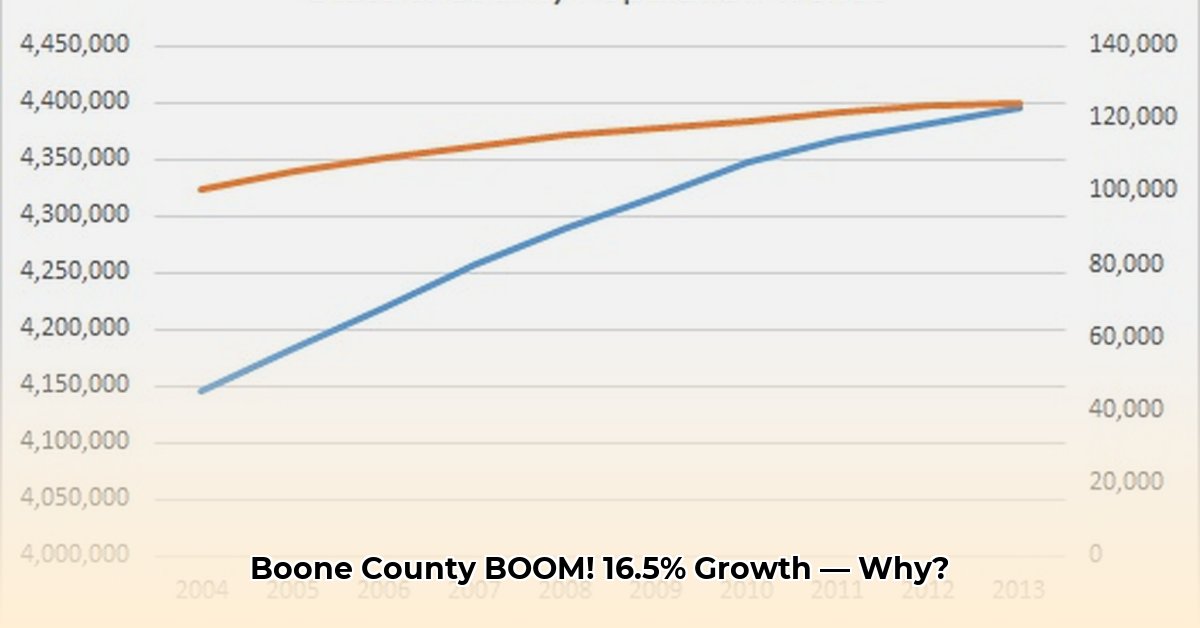
Boone County's Population Surge: A Detailed Analysis (2010-2022)
Boone County, Kentucky, experienced remarkable population growth between 2010 and 2022, a 16.5% increase—surpassing both the national average (7.7%) and Kentucky's (3.8%). This represents a significant jump from approximately 119,000 residents to nearly 140,000. However, understanding the nuances of this growth requires a closer examination of the data and its implications. What factors fueled this expansion? What challenges and opportunities does it present? And what are the implications for the county's future?
Demographic Shifts: Unpacking the Numbers
The increase wasn't evenly distributed across all demographic groups. The non-Hispanic white population saw the most substantial growth, exceeding 11,000 individuals. This is significantly higher than the growth in other racial or ethnic demographics. This trend requires further investigation to fully understand its underlying causes and broader implications.
Simultaneously, the county experienced an 82.3% increase in its population aged 65 and older, a dramatic shift. Conversely, the 0-4 age group saw a slight decrease of 2.2%. This disparity raises questions about Boone County's evolving demographic profile and the potential long-term implications for services like education and healthcare. Is this a reflection of increased retirement migration to the area, or are other factors at play? Further research is needed to fully answer this question. What are the economic drivers behind such significant migration patterns?
Data Limitations and Interpretations
While the available data provides a valuable overview, it also presents limitations. Data discrepancies between sources, such as the US Census Bureau and other local sources, highlight the need for a cautious interpretation of the figures. The absence of complete data in certain areas impedes a fully comprehensive analysis. Reconciling these discrepancies requires a multi-source approach, combining data from various sources and critically evaluating their methodologies and potential biases. The median household income of $94,752 (2023) offers additional economic context but doesn't fully explain the population distribution.
Implications and Challenges: Planning for the Future
Boone County's rapid population growth presents both opportunities and challenges. Strategic planning is crucial to ensure sustainable growth and maintain the county's quality of life.
Immediate Actions (Next 1-2 Years)
Infrastructure Investments: Addressing immediate infrastructure needs is paramount. This includes assessing the sufficiency of housing, schools, hospitals, and transportation networks; are there enough resources to meet the increased demand?
Business Development: Businesses need to adapt their strategies to cater to the changing demographics. Understanding the needs of both the growing senior population and younger families is crucial for economic diversification and sustainability. What new forms of businesses are likely to flourish in such an environment?
Healthcare Capacity: Boone County's healthcare system needs to evaluate its capacity to meet the demands of a larger and aging population. This requires assessing current resources and planning for potential shortfalls. Does the healthcare sector have the capacity to absorb this population inflation?
Educational Resources: Schools must plan for increased enrollment, considering the educational needs of diverse age groups, from early childhood education to higher education. Are there enough qualified teachers and facilities to meet the influx of students?
Long-Term Strategies (3-5 Years and Beyond)
Sustainable Growth Planning: Developing a comprehensive long-term plan for sustainable growth is essential. This includes addressing environmental concerns, preserving green spaces, and ensuring responsible development. How will the county manage continued population growth while preserving its charm and resources?
Economic Diversification: Encouraging economic diversification reduces dependency on specific sectors and enhances resilience against economic fluctuations. Which other industries could flourish in this evolving environment?
Senior Care Infrastructure: Investing in long-term care facilities and services tailored to the needs of the growing senior population is crucial. What measures will be taken to provide quality care for the elderly?
Educational Innovation: Adapting the educational system to meet the needs of a diverse student body requires innovative curricula and learning approaches. How will the educational system adapt to cater to a more diverse student population?
Conclusion: Boone County's Evolving Landscape
Boone County's population growth represents a dynamic transformation. Careful analysis of the available data, combined with a proactive approach to planning and resource allocation, will be essential for navigating the opportunities and challenges presented by this rapid expansion. Further research, particularly using complete and up-to-date data sets, is needed to fully understand the underlying factors driving this population surge and to develop effective strategies for shaping Boone County's future.